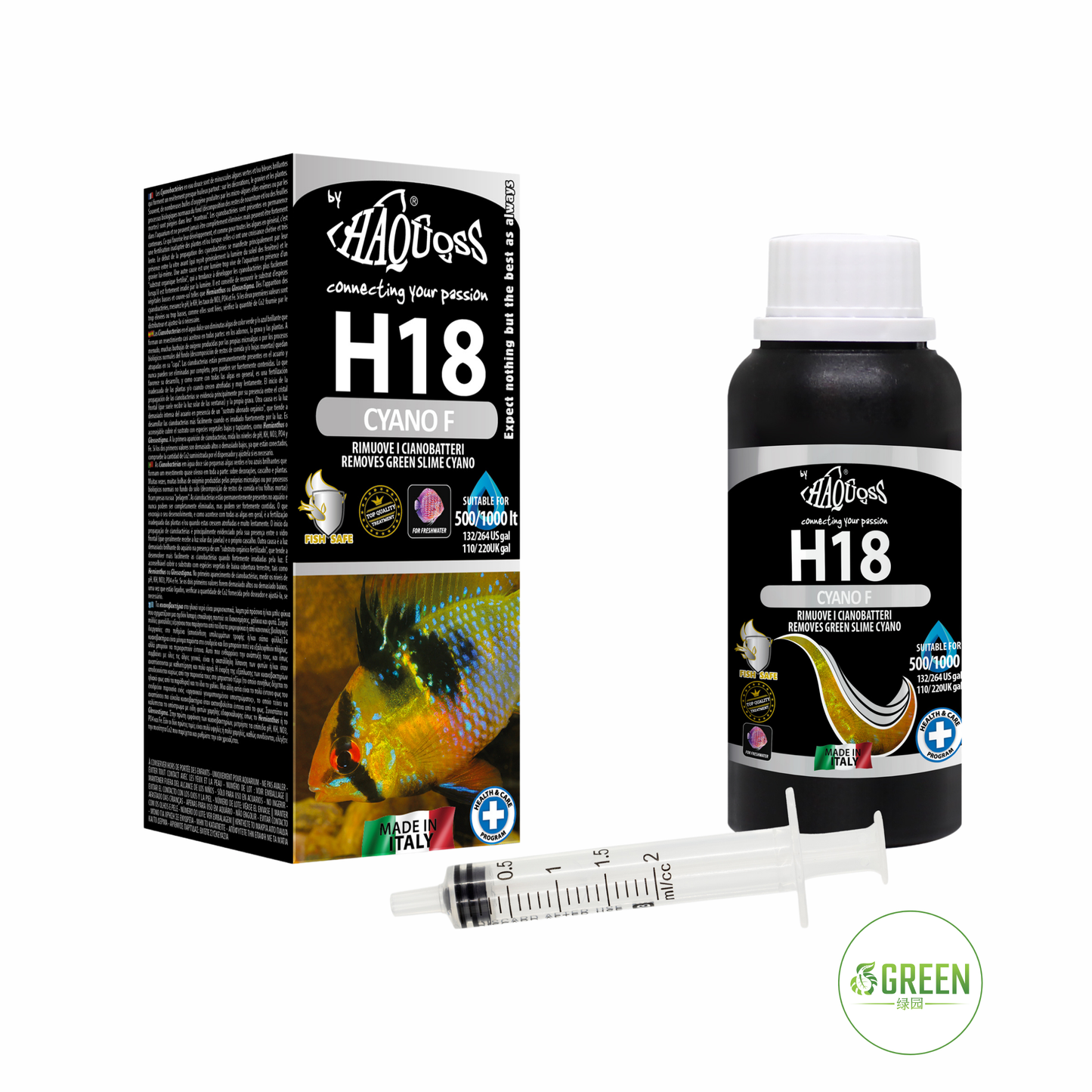HAQUOSS H18 - CYANO F
HAQUOSS H18 - CYANO F
Cyanobacteria, often appearing as bright green or blue algae, can form an oily film on decorations, gravel, and plants in freshwater aquariums. These microalgae can trap oxygen bubbles, produced either by the algae themselves or by the decomposition of organic matter in the substrate.
While cyanobacteria are a permanent presence in aquariums and cannot be entirely eliminated, their growth can be significantly controlled. Their proliferation is often favored by unsuitable plant fertilization or when plants are growing poorly and slowly.
The initial spread of cyanobacteria is particularly noticeable between the front glass (especially if exposed to sunlight) and the gravel. Intense aquarium lighting, combined with a "fertilized organic bottom," can also encourage their development.
Preventing and Addressing Cyanobacteria
To help prevent cyanobacteria, we recommend covering your substrate with low-growing ground cover plants like Hemianthus or Glossostigma.
Upon the first signs of cyanobacteria, it's crucial to measure your water's pH, KH, NO3 (nitrates), PO4 (phosphates), and Fe (iron) levels.
pH and KH: If these values are too high or too low, and since they are interconnected, check the CO2 supply from your dispenser system. Adjust it as necessary. If you don't have a CO2 system and your CO2 concentration is low (perform a test), add Haquoss P8 – CARBON BOOSTER until you reach the desired level.
Nitrates and Phosphates: If these are high, place the appropriate Haquoss NITRATOR and Haquoss PHOSPHATOR resins in your filter.
Iron: If your iron content is low, supplement with Haquoss P6 – IRON BOOSTER.
After adjusting your water chemistry, perform two consecutive daily partial water changes, each equivalent to 10% of your aquarium volume. During these changes, use an appropriate waste vacuum cleaner to carefully remove any visible patches of algae without breaking them up. Remember to use Haquoss DM1 CONDITIONER and Haquoss DM2 ALIVE during this process.
On the third day, after the two water changes, begin treatment with Haquoss H18. Continue to maintain the chemical water values as explained above. During the treatment, reduce your aquarium's light hours by at least 50%.
HAQUOSS H18 Dosage and Application
Dosage: Use the provided syringe to apply 1ml of Haquoss H18 liquid directly over each remaining cyanobacteria patch. Each milliliter treats approximately 5-6 cm² of surface area.
Important Considerations:
For each daily intervention, use a maximum of 5ml of product per 25 liters of water.
Turn off your recirculation pump during administration. Observe your fish to ensure they remain calm and are not breathing heavily. If they show signs of distress, reactivate the recirculation pump, turn off any CO2 supply, and activate your aerator.
Apply Haquoss H18 3 to 4 times, every other day, to the same affected spots.
At the end of the treatment, perform a 15% partial water change using Haquoss DM1 CONDITIONER and Haquoss DM2 ALIVE.
Within 15 minutes of each treatment, it is recommended to measure your pH and KH levels. If these values drop, turn off your CO2 system (if present) and increase air supply via your aerator.
If necessary, intervene with Haquoss D12 KH PLUS or Haquoss D10 PH PLUS as needed.
Please be aware that the reduction and near-total disappearance of cyanobacteria are gradual processes, and it may take up to 15 days to see the full effects of the treatment.
HAQUOSS H18 is harmless to fish, plants, and crustaceans.
Do not overdose and do not combine with other medications.
Couldn't load pickup availability
Share


